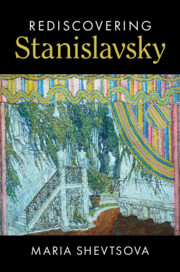Chapter 1 - Context I
Published online by Cambridge University Press: 12 November 2019
Summary
Stanislavsky’s artistic development is tracked in its various phases during the years preceding the 1917 Revolution and according to his strongest affinities and the most important influences that he absorbed into his guiding principles for the Moscow Art Theatre. Attention is focused on Abramtsevo, the artistic colony and utopian community founded by Savva Mamontov, a family friend and significant part of the habitus that shaped Stanislavsky’s cultural attitudes and tastes. It is at Abramtsevo and also at Mamontov’s Private Opera Theatre in Moscow that Stanislavsky saw communal artistic aspirations in action and how leading visual artists, composers and singers, notably Chaliapin, combined their different talents and skills, providing him with reference points for his ensemble theatre and its aim for harmoniously integrated productions.
Related inspiration to do with Old Believer Orthodoxy and its values, Tolstoy’s beliefs, Sulerzhitsky’s Tolstoyan perspectives, Vrubel’s mystical paintings and Scriabin’s ecstatic music, along with numerous other experiences of the Russian Silver Age, not least Mikhaïl Chekhov’s stage experiments, contextualize and illuminate Stanislavsky’s theatre work in its fullest sense. Sociopolitical factors similarly situate Stanislavsky’s endeavours in the first ‘half’ of his life in art.
- Type
- Chapter
- Information
- Rediscovering Stanislavsky , pp. 1 - 42Publisher: Cambridge University PressPrint publication year: 2019

